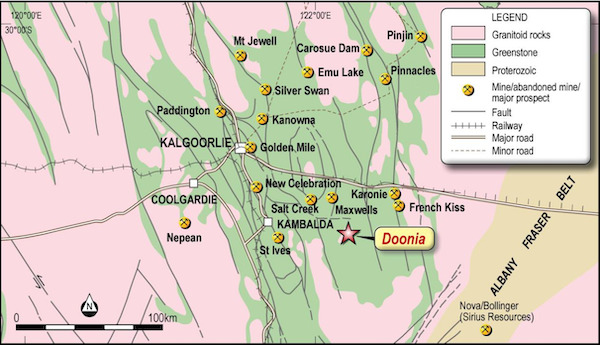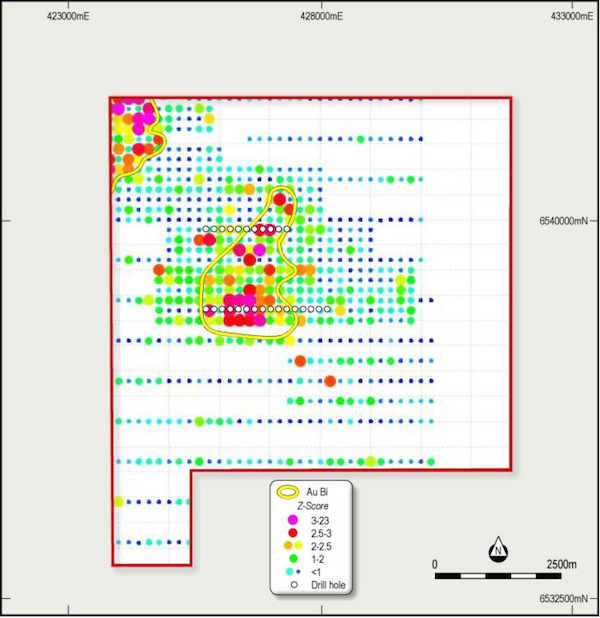Impact Minerals flags new project’s ‘one-out-of-the-box’ potential

Pic: Tyler Stableford / Stone via Getty Images
Special Report: Impact Minerals has significantly strengthened its exploration portfolio, picking up an 80% interest in a drill-ready gold project in Western Australia’s prospective Eastern Goldfields.
Impact (ASX:IPT) announced this morning that it had taken the majority stake in the Doonia gold project, which is located 75km east of Kambalda in the Mt Belches Basin and proximate to Gold Fields’ world-class St Ives gold mine.
The project was recognised by Impact as a large but poorly tested soil-in-gold anomaly, and was brought to the company’s attention by consultants Milford Resources Pty Ltd and Odette One Pty Ltd.
The latter of that pair will take the remaining 20% stake in Doonia, forming an unincorporated joint venture on the project upon its grant.
Under the terms of the Doonia transaction, Milford will be paid $3750 and issued 353,829 shares in Impact as a finder’s fee. A further payment of $10,000 worth of Impact shares will be issued to Milford upon grant of the tenement.
Odette will have a free carried interest in the project up to a decision to mine, when it will have the option to contribute to future costs on a pro-rata basis or convert its interest to a 1% net smelter royalty.
Impact managing director Dr Mike Jones said there was huge potential for the company at Doonia.
“Doonia is a highly prospective addition to our exploration portfolio and we acted very quickly when alerted to the opportunity,” he said.
“We now have an exploration project with excellent indications for the discovery of a significant gold deposit with a target that is already well defined, easily manageable and cheap to test.
“The large surface geochemistry gold anomaly has been very poorly drilled and we will endeavour to do that as quickly as practicable after our tenement is granted in 2021.”

Impact said it identified Doonia as a target following a review of the Eastern Goldfields for intrusion-hosted deposits in light of De Grey Mining’s Hemi discovery in the Pilbara, where a major gold deposit held in felsic intrusions was recently outlined and continues to grow.
“The recent discovery at Hemi is a classic example of ‘you don’t find what you don’t look for, where for decades it was considered that a deposit of that size and scale was unlikely to be found in the Pilbara Craton,” Dr Jones said.
“There is a good chance that Doonia may also be an ‘out-of-the-box discovery.”
Previous testing a head start
Doonia was previously tested in 1999 by WMC Resources, when 721 soil geochemistry samples were taken at an initial spacing of 800m by 200m.Subsequent infill was carried out at a spacing of 200m by 200m between samples. Two encouraging gold-in-soil anomalies were then defined and tested by 65 aircore holes at an average depth of 28 metres.
Impact said this testing returned values of up to eight parts per billion (ppb) gold, 8.4ppb bismuth, 440 parts per million (ppm) nickel and 90ppm copper.
While the upfront absolute values are modest, Impact said the entire area was underlain by stabilised sandy soils and colluvium – well-known to dilute soil geochemistry responses.
The soil geochemistry results also revealed what Impact labelled “a distinct and coherent zoned geochemical anomaly” that wasn’t picked up by WMC, comprising of a core area of gold and bismuth some 2500m long and 1000m wide at the centre of the project area, surrounded by a larger halo of arsenic and antimony.

Building on these results, Impact intends to complete further soil geochemistry surveys to define drill targets for immediate follow-up once the tenement application is granted.
Broken Hill work ongoing
Impact is also continuing to drill its mineral rich Broken Hill project in New South Wales, with follow up drilling set to start at the Plat Central prospect to track a recently identified copper-nickel-platinum group elements (PGE)-bearing basal channel.
Assays from this area are due next week and expected to further define the relationship between PGE grades and Impact’s proprietary ratio, which was used to help define the channel structure.
Drilling is still in progress at the Little Broken Hill Gabbro prospect, with early indications of copper-nickel and possible PGEs encouraging and a number of holes fast-tracked to the lab.
Assays are also due soon for the company’s Dora East and Red Hill prospects. The Broken Hill work is timely, given anticipated palladium price highs in 2021.
The company said it also intended to drill its Apsley porphyry copper-gold target, also in NSW, in early 2021. Results from ground IP surveying which are expected to define drilling targets are due in the next two weeks.
This article was developed in collaboration with Impact Minerals, a Stockhead advertiser at the time of publishing.
This article does not constitute financial product advice. You should consider obtaining independent advice before making any financial decisions.
Related Topics

UNLOCK INSIGHTS
Discover the untold stories of emerging ASX stocks.
Daily news and expert analysis, it's free to subscribe.
By proceeding, you confirm you understand that we handle personal information in accordance with our Privacy Policy.








